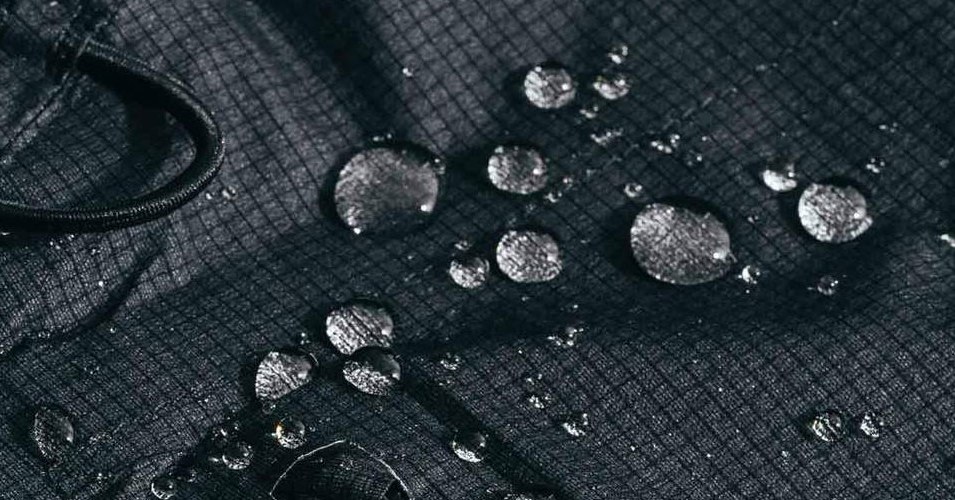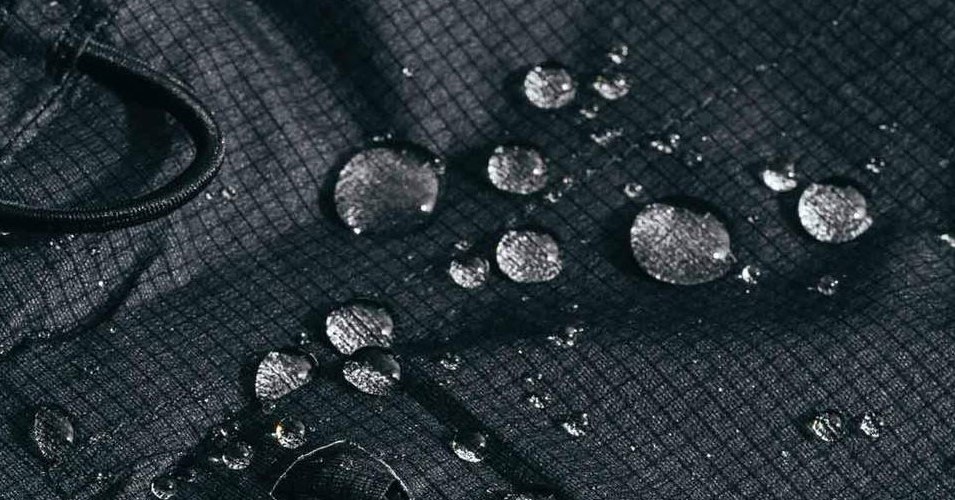
Every time I slip on a rain jacket, I give thanks that we no longer have to wrap ourselves in smelly seal skin or bulky rubber slickers to stay dry. Advances in weatherproof textiles and apparel design mean that rain jackets today are more comfortable and watertight than ever before. But depending on the climate and your level of activity, sorting through different styles, technologies, and waterproofing ratings can be confusing.
To help, I tested over a dozen different waterproof rain jackets through a long, wet Pacific Northwestern winter. I also consulted Amber Williams, a consumer science educator and lecturer in textile science and pattern making at Utah State University’s outdoor product design department, for advice on how to pick the best rain jacket possible.
(Note: When you buy something using the retail links in our stories, we may earn a small affiliate commission. Read more about how this works.)
1. Best Lightweight Rain Jacket
Marmot Bantamweight Jacket ($275)
The Bantamweight Jacket’s face fabric is a crazy-thin 7 denier x 7 denier weave with a 20K/20K waterproof and breathability rating, and it performed spectacularly well. It kept me dry on hours-long runs in constant, dripping rain. The fabric is so soft and light that it almost feels as if I’m wearing nothing at all. It weighs less than 5 ounces and scrunches up small enough to fit in a pocket. It’s not heavy enough to double as a shell—it has perforated holes under the armpits to release more heat—but for active outdoor workouts, the Bantamweight was the best rain jacket I tried.
The Bantamweight also uses C6 Durable Water Repellant (DWR) instead of a proprietary breathable membrane. DWR and Gore-Tex are the gold standard in waterproofing materials, but both produce perfluorocarbons (PFCs), a chemical that doesn’t break down in the environment and has been linked to, among other things, testicular and kidney cancers. It’s good that that some manufacturers, such as Marmot, have moved away from the traditional C8-based DWR (the C8 refers to the molecular structure) to the more environmentally-friendly C6.
Marmot Bantamweight Jacket costs $275 at Marmot, Backcountry, and Moosejaw
2. Best City Rain Jacket
Fjällraven Keb Eco-Shell ($500)
Out of all the jackets I had to test, I ended up reaching for REI’s Keb Eco-Shell as my daily jacket. The Keb is a technical shell, with features like a helmet-compatible hood, plasticized water-resistant zippers, and pockets on the chest so that you can access them while wearing a climbing harness or a hip belt. It’s seam-taped, and the waterproofing and breathability ratings for the fabric are astonishingly high, at 30K/26K.
But for all its technical features, I loved the Keb as a city jacket. Small features, like a genius mesh pocket within a pocket, were so convenient for running errands and checking my phone at the grocery store. And if you’re going to pay this much for a jacket, you might as well buy one that can go anywhere with you. Eco-Shell can also be endlessly re-impregnated with their proprietary PFC-free DWR spray. (You can do the same with Nikwax, too.)
Fjällraven Keb Eco-Shell costs $500 at REI
3. Best Hiking Rain Jacket
Arc’teryx started as a high-end climbing brand, designing climbing harnesses in 1989. For a few extra ounces and extra bucks, you get a very fancy technical jacket. The Zeta SL is their emergency shell, and it’s made from Gore-Tex Paclite Plus, a two-layer fabric that feels less sticky and clammy on your skin.
At 9.5 ounces, it’s a little hard to pack it into a pocket. But for that extra weight, you get features like comfy microsuede on the chin guard, so you don’t scrape up your face, and a hanger loop, to let it dry and air out after use. It also has plasticized, water-resistant zippers; a laminated hood brim; and protective zipper flaps that prevents water from seeping in.
As you might expect from a climbing brand, all of Arc’teryx’s jackets are designed for full articulation in the arms and chest. While Williams has cautioned against lots of seaming, I couldn’t help but appreciate the freedom of motion while hiking and biking. It’s also fully seam-sealed.
Arc’teryx Zeta SL costs $299 at REI
4. Best Insulated Rain Jacket
Voormi Inversion Jacket ($499)
If you spend time outside, then you know that clothes aren’t just fashion—they’re your first line of defense against the elements. But while some of us derive pleasure from endlessly pondering which base layer goes with which fleece, with which down jacket, with which shell, others might find it a royal pain. If you’re a one-and-done jacket person, then Voormi’s Inversion Jacket might be for you.
We’ve written about Voormi’s innovative tech before. Rather than laminating a waterproofed layer on top of a membrane, it knits the merino wool directly through the waterproof membrane. The body of the jacket is made from its proprietary blend of water-resistant wool, with waterproof surface-hardened wool along the shoulders and arms.
The result is a surprisingly soft, fitted jacket that can be worn directly over a base layer for every activity from backcountry skiing to hiking. It feels, more or less, exactly like a warm, comfortable fleece that keeps you improbably dry. It was so astonishing to be biking in a cold December rain and not have any water penetrate the wool that I put it on and stood in a (cold) shower for 10 minutes. Water continued to bead on the surface until I gave up.
Voormi Inversion Jacket costs $499 at Voormi and CampSaver
5. Best Affordable Rain Jacket
REI Co-op Rainier Rain Jacket ($70)
For less than $100, it is tough to find rain jackets that offer better value than the Rainier. It uses high-quality laminate waterproofing instead of the less expensive coating many cheaper rain jackets tend to rely on (see below for info on laminates and layers). Rather than bonding a waterproof, breathable membrane below the shell fabric, manufacturers will save money by just coating the inner surface with a waterproof, breathable film. It’s less expensive, but also less durable than three-layer construction.
For transparency, I tested REI’s Essential rain jacket, which is currently being phased out. The Rainier is this year’s upgrade, and has many of the same features that I liked about the Essential and a few new ones—for example, it’s made from recycled nylon, and has venting pit zips (I found the Essential to be too sticky and clammy for running.) It’s also seam-taped, has a weatherproof center zip, and an adjustable, packable hood. For casual day hikes and traveling, the Rainier jacket is a great choice.
Co-op Rainier Rain Jacket costs $70 at REI
Honorable Mentions
-
Patagonia Cloud Ridge ($249) Is Also Great for Hiking: Many people choose Patagonia for its record on sustainability, and may be disappointed by its choice to stay with a DWR that isn’t PFC-free. However, in 2016, the company switched from the DWR treatment with a longer chemical structure, or C8 PFCs, to one with a shorter molecule that is easier to break down. The Cloud Ridge includes a stuff sack and the hood is helmet-compatible.
-
Eddie Bauer BC Uplift ($199) Is Rugged and Lightweight: Eddie Bauer did eliminate features like side pockets in order to keep the weight at 5 ounces, which was a little annoying. But it fit comfortably and kept me dry on runs and dog walks, and looks stylish enough to wear as a casual jacket. It’s also fully seam-sealed and has 20K/20K waterproofing and breathability ratings.*
-
Mission Workshop Sans ($475) Is for Textile Nerds: You’ll also want to touch this one. It’s made from a 3-layer fabric that uses a microporous membrane made exclusively for Mission Workshop by the Japanese textile company Toray for the venting layer. It performs just as well in the rain as the Bantamweight (unsurprisingly, with a 30K/30K rating), but the lining feels silky and luxurious.
-
I Really Like REI’s In-House Jackets: I am continually surprised at the value for the price with REI’s in-house line. Its casual rain jackets have plenty of nice features, work well, and cost hundreds of dollars less than many of my other picks. I’ve also seen REI try experimental fabrics like eVent, a direct-venting fabric technology in its Co-op Stormrealm Jacket ($124) that’s fantastic for alpine applications and is normally used in much pricier outerwear.
Understanding Rain Jacket Tech
The North Face Futurelight at CES 2019
Deciphering a waterproof jacket’s product specs might be more annoying than walking in the rain.
Look for Laminated Layers: Most technical waterproof jackets are referred to as two- or three-layer jackets. These layers usually consist of a face fabric that has been treated with a waterproofing agent like Durable Water Repellent (DWR), a thin mesh for releasing water vapor, and a protective interior lining underneath. In general, Amber Williams suggests that for greater durability, you’ll want to look for layers that have been laminated together, rather than merely coated with a waterproofing agent.
Waterproof and Breathability Ratings: Manufacturers usually rate each fabric based on its waterproofing and breathability. For example, a rain jacket with a waterproof rating of 20,000 means that if you had an endlessly long 1-inch square tube, you could pour 20,000 millimeters of water on top of the fabric before it would start seeping through (that’s over 65 feet!). A 20,000 breathability rating means that 20,000 grams of water vapor can pass through the fabric going the other direction. While the higher breathability rating might seem better, you might want to think twice if you’ll be out in the cold. Body heat can escape a breathable jacket almost as easily as water vapor.
Fantastic Fabrics: While Gore-Tex remains the gold standard in terms of waterproofing performance, new fabrics are coming out all the time. I was particularly excited for the North Face’s Futurelight technology, which we saw at CES this year. Nanospinning allows the North Face to create a spider-weight waterproof breathable fabric, which can be adapted for all kinds of garments—a T-shirt, a dress—but will also allow designers to create garments with far fewer seams. The fewer the seams, the fewer vulnerable points which can degrade and let water seep in. Unfortunately, no North Face rain jackets will be available until Autumn 2019.
Check the Seams and Zippers: If you want your rain jacket to last longer than an amusement park poncho, look at the seams. Shoulders are particularly vulnerable points, as most outdoor sports require you to wear a backpack that can rub and damage them. “Design lines look really sexy, but over time, they’re not going to last as long,” said Williams. Other features to look for include plasticized, water-resistant zippers and protective zipper flaps. That’s why our rain jacket picks are so expensive—a lot of new fabric tech and a lot of design details!
Care for Your Jacket: You can also vastly extend the life of your jacket by caring for it properly. Hang it—don’t store it crammed in an abrasive, tiny stuff sack. If you notice grease, dirt, or sunscreen, or notice that water is no longer beading on the surface, you’ll need to wash it. Follow the manufacturer’s instructions. You may need a specialized detergent—many fabric detergents will leave residues that can interfere with DWR’s performance. Avoid fabric softener, bleaches, dry cleaning, or the dryer.
More Great WIRED Stories
- DJs of the future don’t spin records—they write code
- The true dollar cost of the anti-vaccine movement
- Ferrari built the track-slaying P80/C for a single customer
- Long before selfies, people wanted to share pics
- What it’s like to be thrown in jail for posting on Facebook
- 👀 Looking for the latest gadgets? Check out our latest buying guides and best deals all year round
- 📩 Want more? Sign up for our daily newsletter and never miss our latest and greatest stories

